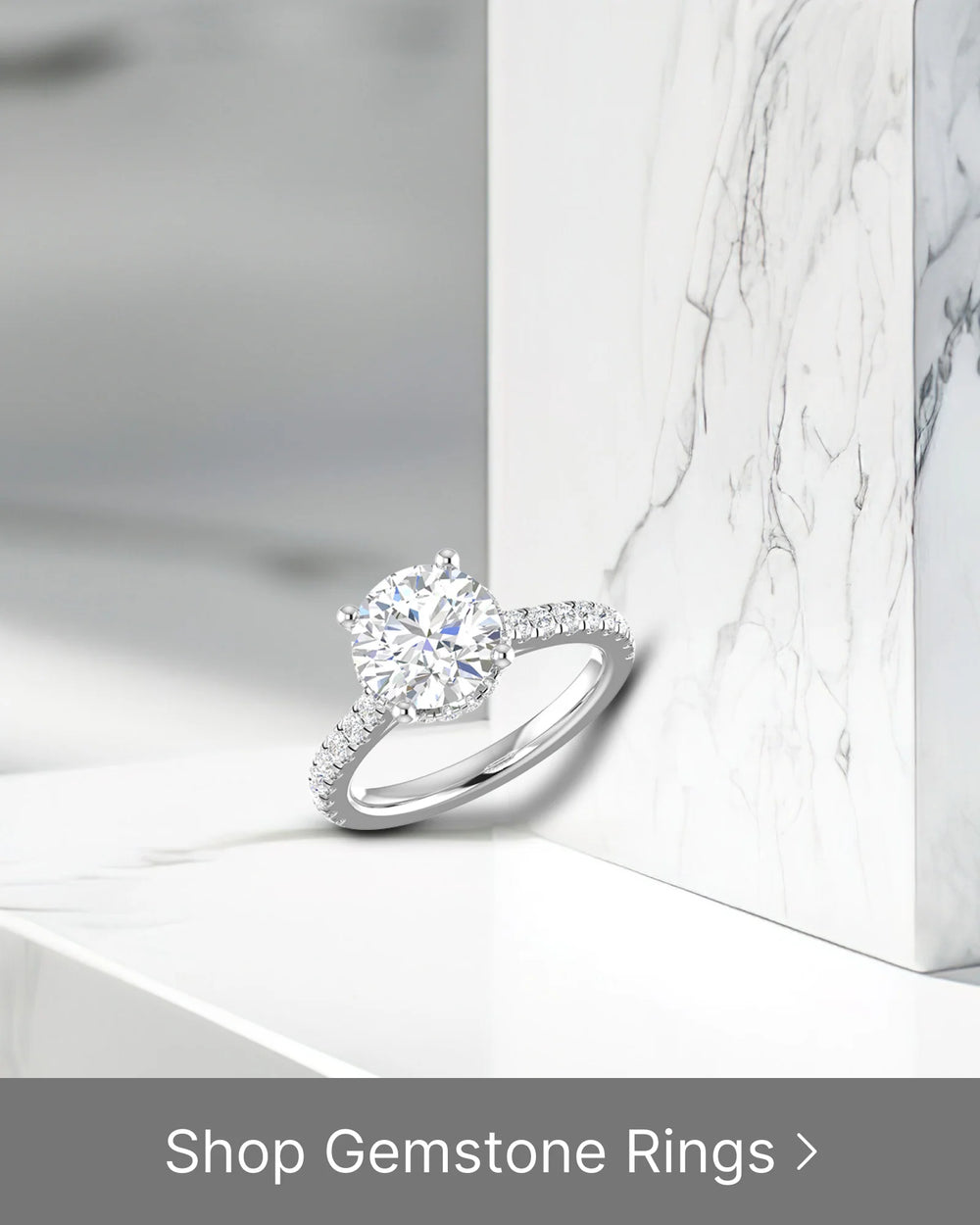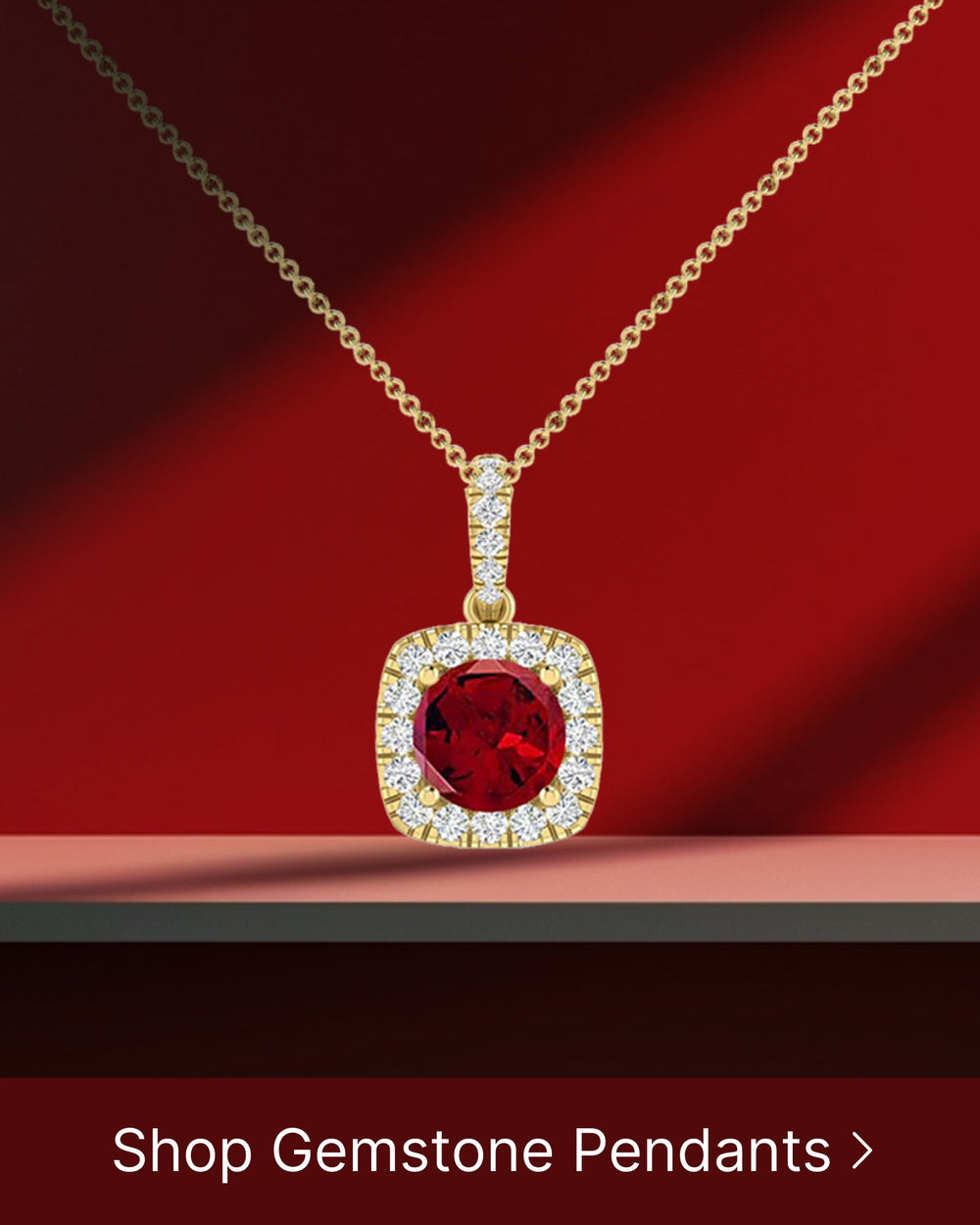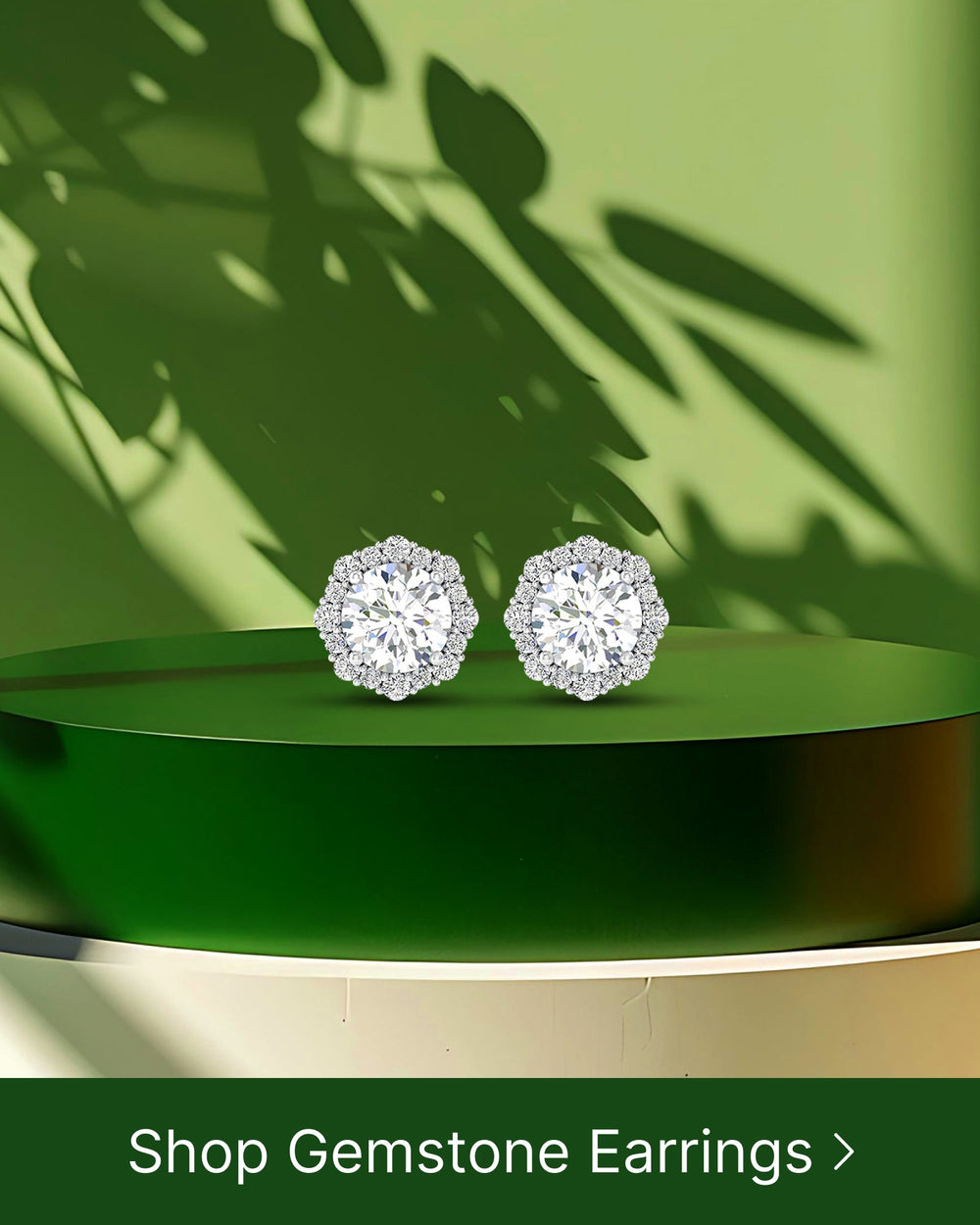Diamonds are the epitome of elegance and beauty, their sparkling allure captivating many. But what makes a diamond sparkle with such brilliance? In this article, we will delve into the intricate world of diamond sparkle and explore the various factors that contribute to it.
Understanding Diamond Sparkle
Diamond sparkle is a mesmerizing quality that captivates the eye. It is the result of an intricate interplay of light and the diamond's physical properties. The way light interacts with a diamond determines its sparkle, and several factors contribute to this phenomenon.
When we delve into the science behind diamond sparkle, we discover a fascinating world of optics and beauty. The diamond's ability to refract, reflect, and disperse light lies at the heart of its captivating sparkle.
The Science Behind the Sparkle
The science behind diamond sparkle lies in the diamond's ability to refract, reflect, and disperse light. When light enters a diamond, it undergoes refraction, bending as it passes through the diamond's facets. This refraction creates a play of light that we perceive as sparkle.
Imagine a beam of light gracefully entering a diamond, its path bending and dancing as it encounters the diamond's carefully cut facets. Each facet acts as a tiny prism, bending the light and creating a mesmerizing display of brilliance.
But the journey of light within a diamond doesn't end with refraction. Additionally, light that strikes the diamond's surface reflects back to our eyes, further enhancing the diamond's brilliance. The diamond's facets act as mirrors, reflecting the light in a captivating manner.
As we gaze upon a sparkling diamond, we are witnessing a symphony of light. The light enters the diamond, dances through its facets, and then bounces back to our eyes, creating a dazzling spectacle that is hard to resist.
Lastly, light that enters the diamond can be dispersed into its spectral colors, creating flashes of brilliant hues. This dispersion adds another layer of allure to a sparkling diamond. Imagine a burst of colors emanating from a diamond, like a miniature fireworks display, captivating our attention and leaving us in awe.
Factors Influencing Diamond Sparkle
Several factors influence a diamond's sparkle, including cut, clarity, color, and carat weight. Let's explore how each of these elements plays a role in determining which diamond sparkles the most.
The cut of a diamond is perhaps the most crucial factor in determining its sparkle. A well-cut diamond maximizes the amount of light that enters and exits the stone, allowing for optimal brilliance and sparkle. The precision and craftsmanship in cutting a diamond can make all the difference in its overall sparkle.
Clarity also plays a significant role in a diamond's sparkle. Diamonds with fewer internal or external flaws, known as inclusions and blemishes, allow light to pass through more easily, resulting in enhanced sparkle. The clarity of a diamond is determined by the absence or presence of these imperfections.
Color is another factor that affects a diamond's sparkle. Colorless diamonds, graded as D on the color scale, tend to reflect light more effectively, resulting in a dazzling sparkle. As the color grade moves down the scale, with increasing hints of yellow or brown, the diamond's sparkle may be slightly diminished.
Carat weight, the measurement of a diamond's size, can also influence its sparkle. Larger diamonds tend to have a greater presence and can exhibit a more pronounced sparkle. However, it is important to note that carat weight alone does not guarantee exceptional sparkle; the other factors mentioned above also come into play.
Understanding the factors that contribute to diamond sparkle allows us to appreciate the beauty and complexity of these exquisite gemstones. The interplay of light, the diamond's physical properties, and the craftsmanship involved in cutting and shaping the stone all come together to create a mesmerizing sparkle that captivates our senses.
Types of Diamond Cuts and Their Sparkle
The diamond cut is crucial in determining the diamond's sparkle. Different cuts reflect light in unique ways, resulting in distinct patterns of sparkle. Let's explore some popular diamond cuts and their sparkling qualities.
Round Brilliant Cut
The round brilliant cut is renowned for its exceptional sparkle. Its precisely calculated facets maximize the diamond's brilliance, creating a dazzling display of light. The symmetrical arrangement of facets enhances light reflection, ensuring a stunning sparkle from every angle.
When a diamond is cut into a round brilliant shape, it undergoes a meticulous process to achieve its optimal sparkle. The diamond cutter carefully calculates the angles and proportions of the facets, taking into account the refractive index of the diamond. This precision allows the round brilliant cut to maximize the amount of light that enters the diamond and reflects back to the viewer's eye.
As light enters a round brilliant cut diamond, it encounters a series of facets that act as mirrors, reflecting the light internally. The light then bounces off the diamond's pavilion facets and exits through the table, creating a mesmerizing display of sparkle. The round brilliant cut's ability to reflect light so effectively is what gives it its signature sparkle and timeless beauty.
Princess Cut
The princess cut, with its square or rectangular shape, exudes a modern appeal. It offers a unique blend of sparkle and geometric elegance. The princess cut's truncated corners and brilliant faceting enhance light reflection, resulting in a scintillating sparkle that catches the eye.
When a diamond is cut into a princess shape, the cutter carefully crafts a series of facets that work together to maximize the diamond's brilliance. The princess cut's faceting pattern consists of chevron-shaped facets that intersect at sharp points, creating a stunning display of light and sparkle.
The princess cut's square or rectangular shape allows for a larger table facet, which is the flat surface on the top of the diamond. This larger table facet enhances the diamond's ability to reflect light, resulting in a brilliant sparkle that is sure to captivate. The combination of the princess cut's faceting and shape makes it a popular choice for those seeking a modern and glamorous diamond.
Oval Cut
The oval cut is known for its elongated shape, which visually elongates the wearer's finger. Its gracefully curved contour and brilliant faceting create a delightful sparkle. The oval cut's elongated facets allow light to bounce within the diamond, producing a mesmerizing display of sparkle.
When a diamond is cut into an oval shape, the cutter carefully crafts a series of elongated facets that maximize the diamond's brilliance. The oval cut's faceting pattern consists of a combination of brilliant-cut facets and step-cut facets, creating a unique play of light and sparkle.
The oval cut's elongated shape allows for a larger surface area, which enhances the diamond's ability to reflect light. As light enters the diamond, it bounces off the oval cut's facets, creating a beautiful display of sparkle and fire. The oval cut's elongated silhouette also gives the illusion of a larger diamond, making it a popular choice for those seeking a diamond that appears larger on the finger.
Whether you prefer the classic sparkle of a round brilliant cut, the modern elegance of a princess cut, or the elongated beauty of an oval cut, each diamond cut offers its own unique qualities and captivating sparkle. The choice of diamond cut ultimately comes down to personal preference and the desired aesthetic. No matter which cut you choose, a well-cut diamond is sure to dazzle and delight for years to come.
The Role of Diamond Clarity in Sparkle
While the diamond cut is pivotal in determining sparkle, clarity also plays a crucial role. Diamond clarity refers to the presence of internal or external flaws, known as inclusions and blemishes, respectively. These imperfections can affect a diamond's sparkle.
Defining Diamond Clarity
Diamond clarity is graded on a scale, ranging from flawless to included. Flawless diamonds contain no visible inclusions or blemishes when examined under 10x magnification, whereas included diamonds have visible flaws. The fewer inclusions and blemishes a diamond has, the more light can pass through it, enhancing its sparkle.
How Clarity Affects Sparkle
Inclusions and blemishes can obstruct the path of light, diminishing a diamond's sparkle. When light encounters these imperfections, it scatters rather than reflecting back to our eyes. Therefore, diamonds with higher clarity grades tend to sparkle more brilliantly, as they allow light to pass through unhindered.
The Impact of Diamond Color on Sparkle
Diamond color is another factor that influences sparkle. The diamond color scale ranges from D (colorless) to Z (light yellow or brown). Despite its name, color can significantly contribute to a diamond's brilliance.
The Diamond Color Scale
Absolutely colorless diamonds, graded D, are the most desirable as they allow maximum light to pass through. As we move down the color scale, diamonds exhibit increasing yellow or brown hues. While these subtle color variations might not be noticeable to the untrained eye, they can affect how light passes through the diamond, ultimately impacting its sparkle.
Color's Influence on Sparkle
Colorless diamonds refract light more efficiently and reflect it back with greater brilliance. The absence of any color interference allows for a remarkable display of sparkle. Conversely, diamonds with noticeable color interfere with light refraction, dampening their sparkle to some extent.
Carat Weight and Its Effect on Sparkle
Carat weight is often associated with a diamond's size, but how does it affect sparkle? Let's explore the significance of carat weight in relation to a diamond's sparkle.
What is Carat Weight?
Carat weight measures a diamond's mass, with one carat being equivalent to 200 milligrams. While carat weight primarily influences a diamond's size, it can impact sparkle to some extent.
The Relationship Between Carat Weight and Sparkle
Generally, larger diamonds tend to exhibit more sparkle due to their increased surface area for light reflection. However, a diamond's sparkle is not solely determined by its carat weight. Other factors, such as cut, clarity, and color, also play vital roles in the overall brilliance of a diamond.
Ultimately, the diamond that sparkles the most is a harmonious balance of these factors. The right combination of cut, clarity, color, and carat weight can result in a breathtaking display of brilliance, captivating all who behold it.
In conclusion, understanding the science behind diamond sparkle and considering the role of cut, clarity, color, and carat weight allows us to determine which diamond sparkles the most. Whether it's the precision of a round brilliant cut, the elegance of a princess cut, or the allure of an oval cut, each diamond shape offers a unique sparkle. The diamonds with higher clarity and color grades tend to sparkle more brilliantly. Additionally, while carat weight influences a diamond's size, other factors contribute to its overall sparkle. So, when seeking a diamond that sparkles the most, consider these key elements to make a dazzling choice that will add radiance to any occasion.






